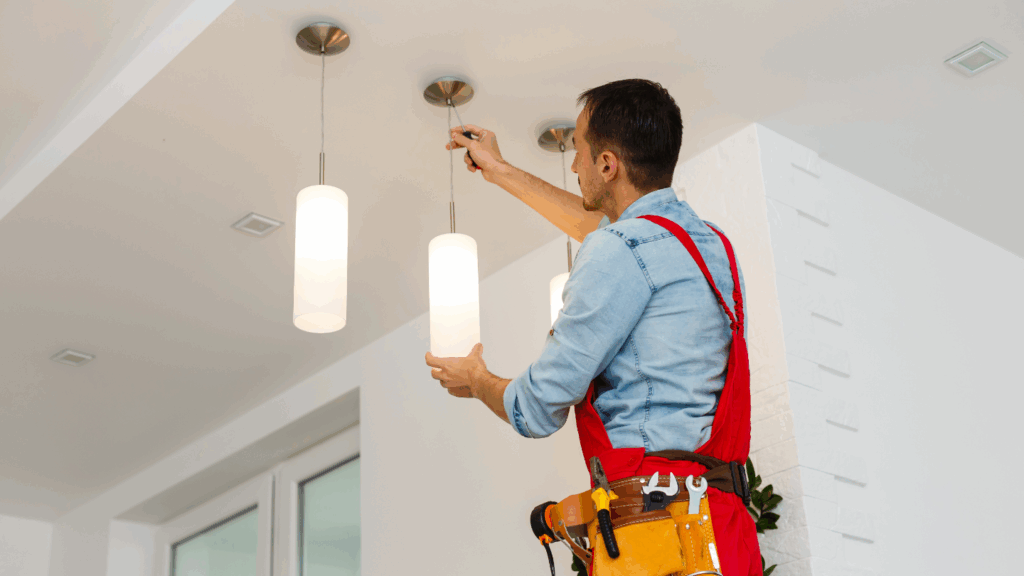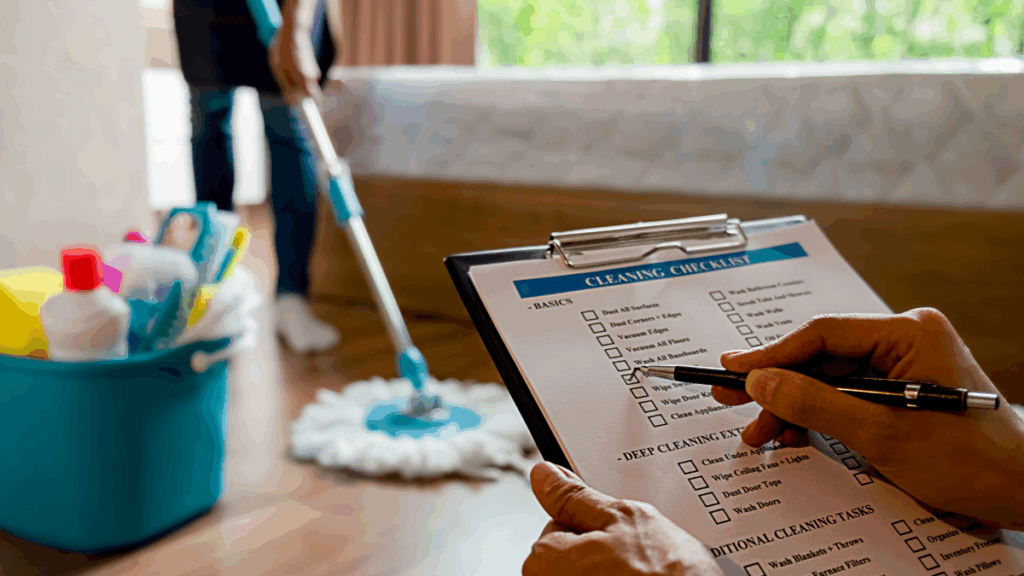DIY vs. Professional Painting in New Orleans: Which Option Saves You More?
New Orleans homes wear color like a badge of honor—Creole cottages splashed in citrus, Greek Revival facades trimmed in cool blues, double-shotguns glowing at golden hour. But our climate is rough on paint. Humidity, UV, sudden rain bands, and salt-tinged air conspire to fade finishes, feed mildew, and pry up weak prep. If you’re staring at peeling trim or dingy living room walls, you’re likely asking: Should I DIY this paint job, or hire a pro?
This guide breaks down true DIY costs, where professionals win on value, and a clear decision framework tailored to New Orleans conditions. You’ll also see how House Fly—our on-demand home-services app—lets you compare local painters by prices, reviews, and real-time availability, then instantly book the one you want.
Why painting in New Orleans is uniquely challenging
- Humidity stretches dry times and weakens adhesion. High moisture slows cure rates and increases the risk of blistering and peeling—especially on exteriors and in bathrooms. Local paint pros often wait for friendlier humidity windows to lock in a durable finish.
- Mold and mildew pressure is real. In our subtropical climate, airborne spores thrive where moisture lingers. Surfaces need thorough cleaning, stain-blocking primers, and (often) mildewcide-enhanced coatings.
- Historic homes require care (and sometimes rules). New Orleans’ HDLC guidance stresses moisture management, surface prep, and repaint cycles (often every 5–8 years)—and warns against impervious “encapsulating” coatings that can trap moisture and accelerate rot.
All of this tilts the calculation: doing it yourself isn’t just “paint + a Saturday”; it’s about weather timing, product choice, safety, and prep discipline.
The real cost of DIY (with an example)
Let’s run a common scenario: repainting three 12’×12′ rooms with 8′ ceilings (walls only).
1) Materials
- Wall area per room ≈ 4 walls × (12′ × 8′) = 384 sq ft → 1,152 sq ft for three rooms.
- Subtract 15% for doors/windows → ~979 sq ft of paintable wall.
- Two coats at ~350 sq ft/gal coverage → 979 × 2 ÷ 350 ≈ 6 gal ⇒ 6 gal of wall paint.
- Add 1 gal ceiling paint + 1 gal trim paint (typical) → 8 total gallons.
- Sundries (primer for spot stains, rollers, brushes, trays, tape, plastic, patch/caulk).
2) Equipment
- 6–8′ step ladder, extension pole, sanding blocks, putty knives; optional sprayer rental (interiors are usually rolled/brushed).
3) Time
- Light patch/caulk/sand: ~8 hrs
- Cutting/rolling two coats: ~12 hrs
- Cleanup/touch-ups: ~4 hrs
- ≈24 labor hours If your own time is worth $25/hr, that’s $600 of “hidden” cost before materials and gear.
DIY can make sense when:
- Surfaces are in excellent condition,
- Rooms are small/simple, and
- You genuinely enjoy the work (and can schedule around humidity).
But factor in the risk of rework from humidity-driven failures (peel, blister, flash), and DIY savings can evaporate quickly if prep isn’t perfect.
Where professional painters often save you money (yes, really)
- Fewer mistakes, longer life. Pros adjust for humidity, time coats correctly, and fix underlying moisture or caulk failures—extending repaint intervals. HDLC notes that frequent repainting usually signals a moisture/prep problem, not simply “old paint.”
- Better product access. Contractors frequently buy paint at discounted rates and know which systems (primers, topcoats, sheens) hold up best here, which can reduce total gallons and future touch-ups.
- Right tools on Day 1. From HEPA sanders to stain-blocking primers and elastomeric sealants where appropriate, pros arrive ready—no last-minute store runs or sprayer learning curve.
- Safety and specialty work. Tall ladders, porch ceilings, metal railings, and trim over stairs are routine for pros and risky for DIY.
- A two- or three-person crew can finish in a day or two what takes a solo DIYer multiple weekends—especially when weather windows are tight.
DIY vs. Pro: a NOLA-specific decision framework
| Situation | DIY is likely fine | Hire a pro (saves money long-run) |
| Room condition | Minor nail pops, no stains, smooth drywall | Water stains, past leaks, hairline cracks, failing caulk |
| Surface type | Flat interior walls, standard trim | Old plaster, exterior wood, stucco, metal railings |
| Height/Access | Single-story interiors with easy access | High ceilings, exterior second story, stairwell walls |
| Weather window | Flexible schedule for low-humidity days | Need it done this week despite humidity |
| Regulatory/Best practices | Basic refresh, no special restrictions | Historic trim or HDLC considerations |
| Tools & skill | You own ladders, rollers, patch tools | Significant scraping/sanding, stain-blocking, or sprayer setup |
| Risk tolerance | OK with imperfections/learning curve | Want uniform sheen, sharp cut lines, and warranty |
What pros actually do differently (that impacts cost)
- Moisture triage before paint: redirect downspouts, fix caulk, address bath fan issues, or spot-prime stains—so paint sticks and stays.
- System matching: pairing bonding primers with the right topcoat and sheen for our climate (e.g., mildew-resistant, UV-stable, easy-clean trim).
- Schedule around dew point/humidity to avoid trapping moisture—a frequent culprit behind blisters/peel.
- HDLC-aligned practices on historic exteriors (no impervious “liquid siding,” proper prep, repaint cycles).
How House Fly helps you compare real prices (and book in minutes)
With House Fly, homeowners in New Orleans can shop local painters, see up-front prices, read verified reviews, and instantly book a day and time that works—no phone tag, no “we’ll email an estimate next week.” Sign-up is free and there are no membership fees.
Why it matters for the DIY vs. pro decision:
- You can see actual job pricing (not ranges) and compare that against your DIY material+time math.
- You’ll know who’s available this week, which is huge when a humidity break opens a perfect paint window.
- Everything—chat, photos, booking, and secure payment—lives in one place.
Quick steps: Open House Fly → Painting (New Orleans) → compare profiles (prices, reviews, availability) → Book your time.
The exterior wildcard (NOLA edition)
Exteriors are where DIY most often flips from “savings” to “surprise spend.” Beyond ladders and safety, the stakes are higher: failed caulk and poor surface prep invite moisture behind wood—accelerating rot and repaint frequency. The city’s HDLC guidelines underscore repaint intervals, prep standards, and moisture management to avoid repeated failure. In many cases, a professional exterior repaint becomes the cheaper option over a 5–8 year cycle because it lasts, looks better, and protects substrate.
A simple way to decide today
- List rooms/surfaces and note any stain/peel/mildew areas.
- Do the math for DIY materials, equipment, and your time (be honest!).
- Open House Fly and compare up-front prices from New Orleans painters for the same scope.
- If the difference is modest—or if you’re dealing with exterior wood, high ceilings, moisture issues, or a tight timeline—hiring a pro likely saves money once you account for lifespan, speed, and avoided rework.
Why choose House Fly over lead-gen sites
Some marketplaces run pay-per-lead systems where contractors pay even when a homeowner never books—costs that can creep into bids. House Fly’s model focuses on transparent, instant booking with prices, reviews, and availability shown up front so you can decide fast and fairly.
Bottom line
If your walls are smooth, small, and indoors—and you enjoy the work—DIY can be satisfying and economical. But once you add humidity, historic details, exterior trim, tight timelines, or prep challenges, professional painters usually win on value. Either way, House Fly makes the choice clear by showing you real prices, real reviews, and real availability in New Orleans—then letting you book instantly when the numbers and timing line up.
















